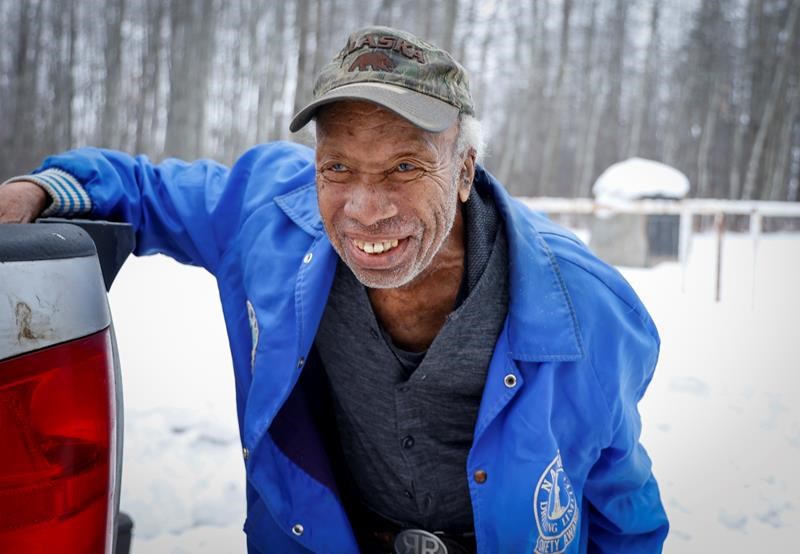Positioned in Alberta, Canada, the Village of Alberta is house to just one African American community. The society has embraced their roots and constructed a memorial to commemorate the African American households that after lived there within the early 1900s. The memorial features a plaque, which reads “In Memory of Our African American Ancestors,” and is a formidable reminder of the way the society has developed over era. The memorial additionally serves to coach folk in regards to the historical past of African American citizens in Alberta and their struggles all over the years.
BRETON, ALBERTA – “My name is Vant Hayes and I’m the only black guy who stayed out here.”
Hayes, who says he’s 88 or “somewhere around,” marks the tip of an time within the village of Breton, 70 miles southwest of Edmonton.
His grandparents William and Mollie Hayes and their youngsters moved from Oklahoma to the section as a part of the Superb Migration of cloudy settlers from the US within the early 1900s, lured by way of guarantees of independent lands and a greater era.
Emerging discrimination in america South within the early 1900s resulted in an exodus of African American citizens to 4 negligible Alberta communities. Breton, at first referred to as Keystone, used to be one.
Lots of the descendants of the latest 54 households have moved on, however Hayes rest.
“You would get a quarter (section) but you had to clear 10 acres on it before you could get the title. I think that was one of the reasons they moved here. Another was in the States. It was bad down there.” he mentioned.
Migration peaked between 1909 and 1911. A 1911 federal form barred blacks from getting into Canada as a result of they had been “considered unsuitable for the climate and requirements of the country,” however used to be overturned then that week.
Hayes’ oldsters, Floyd and Elizabeth, in brief moved to Kelowna, BC with their 10 youngsters to seek out paintings, however returned to the home then their father’s demise.
“It was hard. They try to take care of 10 children. You have to figure out how you’re going to feed them today and tomorrow, and we did it,” Hayes mentioned.
“We ate a lot of eggs… a lot of chicken too,” he added, giggling.
However Hayes mentioned regardless of the pristine state, his mom by no means were given over the remedy she gained in Oklahoma.
“A lot of people had moved here from the States thinking this was the same as being in the States. My mother always carried a .43 Mauser rifle in her car. It was just for her protection,” Hayes mentioned.
“A man got here using this bulky horse and began yelling at them and calling their names. She got here again with this bulky .43 Mauser and mentioned, ‘If you don’t get out of my backyard now, I’m going to explode the pony, and in the event you run, I’m going to explode you too.’
“He was really nice after that,” he added with a grin.
Hayes labored on oil rigs for years however at all times got here again to the farm. He hopes that one among his granddaughters will raise at the community legacy.
He worries that once he dies, native historical past will disappear.
“You won’t have that black history,” he mentioned. “It won’t go on like this forever.”
Brandy Fredrickson’s great-great-grandparents, Sam and Neoma Hooks, moved from Sharpes, Oklahoma, with their 4 youngsters in 1911.
She mentioned it’s remarkable to bear in mind the section’s hour as a result of “you lose those scraps of history” when older folk die.
“I know that we are the fifth generation and my children are the sixth generation,” she mentioned, wiping away tears. “It’s important for me to know where they come from.”
Allan Goddard, the curator of the Breton and District Ancient Museum, grew up within sight however used to be ignorant of the section’s cloudy historical past.
He mentioned that during some early home information, cloudy landowners’ race used to be indexed as nationality within the nook of the web page, which used to be no longer the case for whites.
“They were Americans. That opened my eyes,” Goddard mentioned. “Were they identified to send them to a specific area, or were they just identified by color?”
The society hosts Twilight Historical past Age gatherings each and every week. The latest cemetery has been most commonly forgotten, however now a plethora rock with a brass plaque can pay tribute to the 27 folk known as buried there.
3 tombstones had been optical below a deep blanket of snow on a chilly and foggy January year.
“We apologize for those we missed,” the plaque reads.
Goddard mentioned when the snow is long past, a couple of indentations are optical the place folk will have been buried.
“I was asked about the boarding schools and this ground-penetrating radar stuff a few years ago,” Goddard mentioned, relating to searches for imaginable unmarked burials being performed at many former boarding faculties throughout Canada.
“That was probably pretty high tech back then and I was like, ‘Well, they’re there, they’re at peace,’” he mentioned.
“Maybe we’ll leave it at that.”
This document from The Canadian Press used to be first revealed on February 8, 2023.
Invoice Graveland, The Canadian Press
Don’t miss interesting posts on Famousbio
